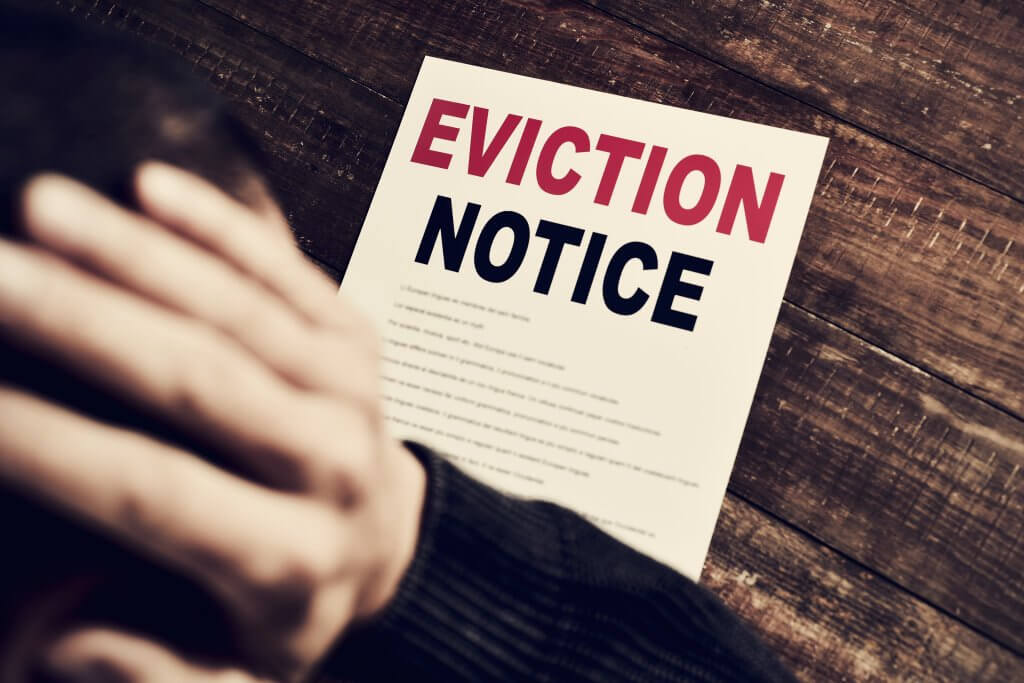States, Cities Face Deadline for Proving How Quickly They’ve Helped Renters in Crisis

States, cities and counties that excelled at distributing emergency federal aid to renters struggling during the pandemic may soon be rewarded — with yet more cash.
Their new funding would be drawn from sluggish states and localities that didn’t move as swiftly to help people facing eviction and homelessness, who were targeted for billions in assistance in relief legislation passed by Congress.
The potential redistribution comes during a year in which Americans who risked losing their housing looked to government for help and a federal eviction ban expired. Meanwhile, state and local leaders struggled to ramp up their rental relief programs — and now a major deadline looms.
Maryland’s U.S. senators have warned that the state may be at risk of losing key federal funding, but state officials recently offered reassurances that this won’t be the case.
The process for sorting out which states and cities may receive more federal rental aid money and which may see reductions begins Monday.
While it’s not clear yet who the winners and losers will be, advocates say some states already stand out for their speed in getting their federal money spent, like New Jersey, Virginia and North Carolina. That funding is part of the Emergency Rental Assistance program (ERA1), part of the Consolidated Appropriations Act of 2021, enacted by Congress in late 2020.
Slower-spending states include Georgia, Arizona, Ohio and Tennessee — although it doesn’t necessarily mean they’ll see their housing funds taken away.
Underperformers
Monday is the deadline for underperforming localities — those that have obligated less than 65% of their funds — to submit a plan to the U.S. Treasury explaining how they’re fixing bottlenecks in getting that aid out the door.
In some places that have spent less than 30% of their federal rental aid, some rental assistance dollars may end up recaptured by the federal government and sent to states, cities and counties that have obligated at least 65% of their funds.
But state and local governments may avoid that outcome if federal officials approve their plans to improve their rental aid programs.
As much as $1.2 billion in unobligated funds could be taken back from underperforming state and local governments, according to a report from the National Low Income Housing Coalition.
But the organization estimated the amount of money that could be shifted around drops dramatically, to $257 million, if those governments have their improvement plans approved.
Maryland is among the state governments that didn’t meet that 30% Treasury benchmark by the end of September, having spent 26% of its allocation by then. Sens. Chris Van Hollen (D-Md.) and Benjamin L. Cardin (D-Md.) previously warned state officials that they were at risk of having ERA1 funding recaptured, but at a Joint Committee on Ending Homelessness meeting earlier this week, state officials told lawmakers the state is now not in danger of losing its funding.
Stuart Campbell, director of the Maryland Department of Housing and Community Development’s Office of Community Services Programs, said at that meeting that the state has since spent more than 30% of its rent relief funding, according to preliminary October data, and is on track to meet Treasury benchmarks of 40% distributed by Nov. 30 and 50% distributed by Dec. 31.
“No jurisdiction in Maryland is at risk of having funds recaptured,” Campbell said.
Emily Haskel, a policy analyst with the Maryland Department of Legislative Services, told lawmakers that the state already certified to the Treasury Department that it distributed more than 30% of its ERA1 funding allocation and obligated at least 65% of those funds. Haskel said the state has been directing some of its funding to jurisdictions where the need is greater, since the allocations were based on population rather than the number of renters.
Maryland’s eight largest jurisdictions, which received ERA1 funding directly, distributed that rent relief money at a much faster pace than the state government as of Sept. 30, according to Van Hollen and Cardin.
Anne Arundel County distributed 74% of its funding; Baltimore City distributed 85% of its funding; Frederick County distributed 71% of its funding; and Prince George’s County distributed 88% of its funding.
Housing advocates say shifting some of those dollars may be a good thing. Every state received a minimum amount through the rental aid program, so smaller states with fewer renters received a disproportionate amount.
Some low-spending states have served relatively high shares of their cost-burdened tenants, according to the report: Vermont, for example, has only spent 13% of its federal aid, but has served 16,043 renters, representing 49% of low-income cost-burdened households statewide.
And in some states, money could be reallocated from underperforming state agencies to cities and counties that have done a better job of connecting with renters.
The process for determining which states and local governments will lose money — and how much — is likely to take several weeks.
Treasury officials will evaluate the program improvement plans from grantees that received some of the $25 billion that Congress initially approved in December 2020.
The money was sent to states and localities to provide quick relief to those facing potential eviction during the public health crisis. But getting that help from states and localities to renters and landlords was a slow process in most communities.
By the end of July, only $5 billion had been spent. Some jurisdictions struggled to set up brand-new programs to distribute those dollars, or to add staffers to historically underfunded rental aid programs.
A slew of requirements to qualify for help also contributed to the slowdown.
Federal officials have urged states and localities to lift those paperwork burdens, and the places that have eased requirements have been the ones to show the most improvements in getting aid dollars out.
Just 40% of rental aid out the door
While those dollars are flowing faster than they were this spring, only 40% of the $25 billion initially approved for rental assistance had been distributed as of Sept. 30, according to Treasury data and an analysis from the National Low Income Housing Coalition.
States, which received $17.7 billion of that funding, had spent $6.7 billion, or 38% of their allocations, by the end of September.
Local grantees had distributed $3.2 billion, or 60% of the $5.4 billion they received.
Treasury data through Sept. 30 shows seven states with expenditure ratios above 65%: New Jersey, New York, Illinois, Virginia, California, North Carolina, and Texas.
Meanwhile, 28% of grantees — including 32 states and 80 localities — have spent less than 30% by that September deadline.
But Treasury officials and housing advocates caution that not all of those underperforming programs will lose money. That’s because the Treasury Department outlined several ways for grantees to prevent or reduce any lost dollars.
One way is to prove by Nov. 15 that they have spent at least 30% of their rental aid dollars, or obligated at least 65%.
Data released by the Treasury Department shows how much states have spent, not how much they have obligated. But some states have shared that amount on their own.
Treasury data shows Michigan as having spent 44% of its funds. But state officials put out a news release immediately after the Sept. 30 cutoff to announce that they had obligated $405 million — enough to meet the 65% threshold to qualify for receiving some of the reallocated dollars.
The September data from Treasury is likely a conservative estimate of which states fall into each category, said Sarah Gallagher, senior project director for the National Low Income Housing Coalition’s End Rental Arrears to Stop Evictions program.
State and local data compiled by Gallagher’s organization through Nov. 8 indicates at least 10 states have spent or obligated at least 65% of their funds, while 27 have approved or spent less than 30%.
States and localities also can reduce how much money could be shifted if their improvement plan is approved by the Treasury. Those plans are supposed to show that they’re incorporating recommended practices, such as making it easier for tenants to apply for funding.
Treasury officials declined to provide details ahead of Monday’s deadline on which states already had submitted improvement plans.
Making ‘course corrections’
Gallagher said her group had urged Treasury officials to require the program improvement plans for underperforming states, describing Monday’s deadline for those reports as “an opportunity to make course corrections.”
The adjustments will look different from state to state.
The report from the National Low Income Housing Coalition highlighted Arizona, Georgia, Tennessee, and Ohio as concerning examples of lower-spending states that have larger renter populations that may still need help.
The solution in some states may be to shift money from state coffers to local ones. While Arizona was at the bottom of the pack for distributing just 4% of its state allocation, its local grantees did much better, according to the NLIHC report.
In some states, it’s the opposite: New Jersey’s state program has distributed funds faster than any other state, while all but three of New Jersey’s 16 local grantees fell short of the 30% threshold as of Sept. 30.
Treasury officials have said they will be prioritizing ways to reallocate rent relief dollars within a state.
There’s also an option for lower-performing jurisdictions to voluntarily reallocate some of their dollars, which would allow a state to shift money to a city with a strong rental aid program.
Bennett Leckrone contributed to this report.




 Creative Commons Attribution
Creative Commons Attribution